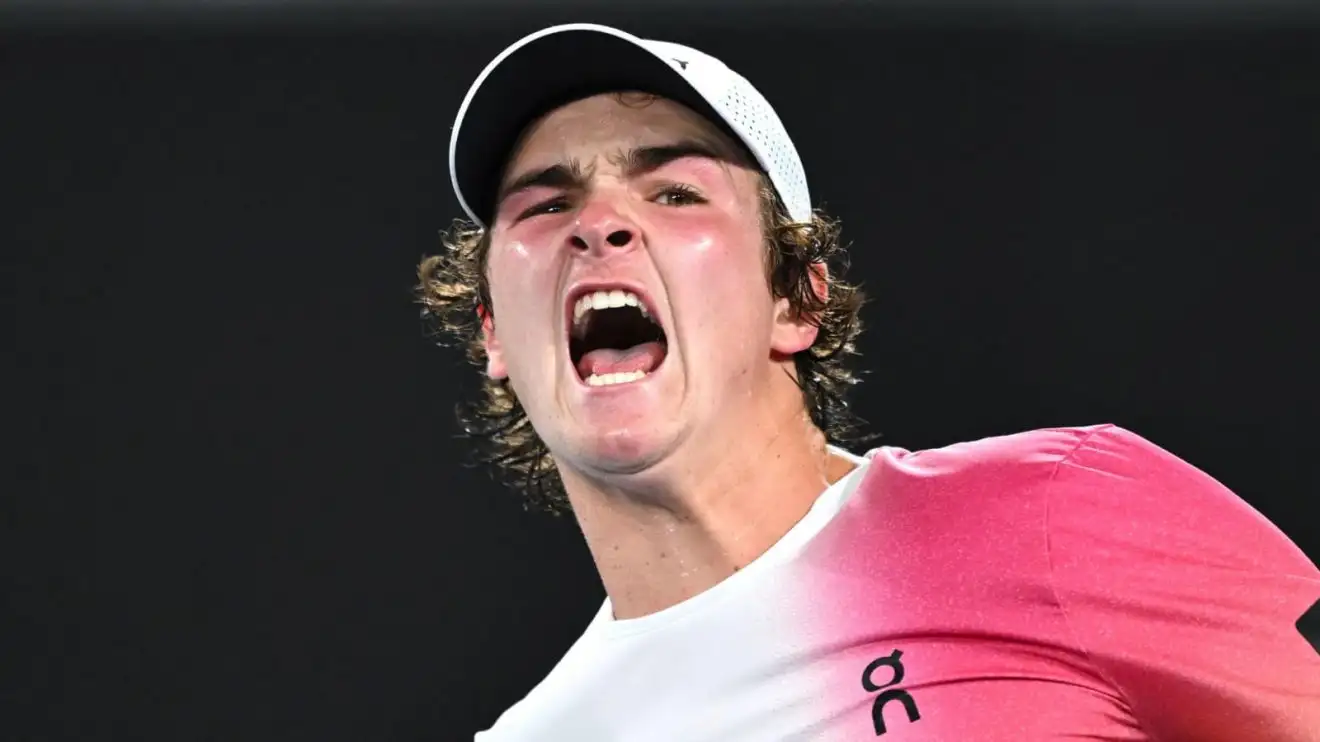
At just 18, Joao Fonseca stands at the forefront of a new era in Brazilian tennis, his explosive forehand and unshakable resolve drawing comparisons to legends like Gustavo Kuerten. But before the teenager from Rio de Janeiro became a professional sensation, he faced a crossroads that could have altered his path entirely. Fonseca turned down a staggering financial offer to play college tennis in the United States, choosing instead to dive headfirst into the cutthroat world of the ATP Tour. His decision, a blend of ambition and instinct, has already begun to pay dividends, with a maiden ATP title, a top-100 ranking, and a growing legion of fans chanting his name from Miami to Melbourne.
The offer came from the University of Virginia, a powerhouse in collegiate tennis known for nurturing talent. With U.S. colleges increasingly eager to attract elite juniors, Fonseca’s prodigious reputation made him a prime target. The deal was a “mega-money” package, a lucrative incentive designed to lure top prospects to the college circuit, where they can hone their skills while earning a degree. For many young players, it’s a tempting safety net—a chance to develop in a structured environment with financial security. Fonseca, however, saw a different future. “It was an incredibly tough decision for me and my family as I have been dreaming about living a college life in Charlottesville, playing the sport that I love with a wonderful team and coach,” he shared on Instagram. “But, in the last months, professional tennis called me in a way that I simply couldn’t say ‘no’.”
Fonseca’s choice was not made lightly. Raised in Ipanema, Rio de Janeiro, he grew up just minutes from the Rio de Janeiro Country Club, where he first swung a racket at age four. His parents, Roberta and Christiano, both avid athletes, nurtured his talent while keeping his options open. “My parents were always very open with me,” Fonseca told a Brazilian outlet. “We decided on the university thing together. They encouraged me a lot, and I really liked that.” By October 2023, he had committed to Virginia, but his breakout performance at the 2024 Rio Open changed everything. There, ranked No. 655, he stunned the tennis world by reaching the quarterfinals, defeating top-50 player Arthur Fils and former champion Cristian Garin. At 17, he became the first player born in 2006 to win an ATP match, skyrocketing 300 spots in the rankings.
The Rio run was a turning point. “I was never pressured about making a decision towards college tennis,” Fonseca said, crediting the University of Virginia for giving him space to choose. Instead, he embraced the professional path, forgoing NCAA eligibility and its prize money restrictions, which could have cost him nearly $50,000 from his Rio earnings alone. His gamble paid off spectacularly. In 2024, he clinched the Next Gen ATP Finals, joining Carlos Alcaraz and Jannik Sinner as one of only three 18-year-olds to win the prestigious event. In January 2025, he shocked No. 9 Andrey Rublev at the Australian Open, becoming the first teenager since 2002 to defeat a top-10 player in a Grand Slam’s first round. Weeks later, he lifted his first ATP title in Buenos Aires, defeating Francisco Cerundolo to become the youngest South American champion since 1990. “Unbelievable week,” Fonseca said after the final. “What I’m living is just unbelievable. My real dream is to play tennis.”
Fonseca’s rise reflects a broader shift in tennis, where top juniors face increasingly lucrative offers to delay their pro careers. Scotland’s Jacob Fearnley, who thrived in the U.S. college system before breaking into the ATP top 100, sees value in that path. “I don’t think that college tennis is in any way a step back,” he said. “It’s actually a step forward.” Yet, for Fonseca, the allure of immediate competition was irresistible. His aggressive style—marked by a 140-mph serve and a forehand that “whips opponents off their axis,” as one commentator put it—has already earned him a wildcard at the 2024 Madrid Open and a top-60 ranking by March 2025. Backed by sponsors like Rolex and Roger Federer’s On brand, and coached by Guilherme Teixeira since age 12, Fonseca is built for the spotlight. “Guilherme feels like a father to me,” he said, underscoring the trust that anchors his team.
As Fonseca’s star ascends, his decision to go pro sparks questions about the future of tennis development. Will more juniors follow his lead, or will the college path remain a viable stepping stone? For now, Fonseca is focused on his craft, unfazed by the pressure. “My dream is just to play tennis,” he said, a simple mantra for a player whose bold choice has already set the tennis world ablaze.
Leave a Reply